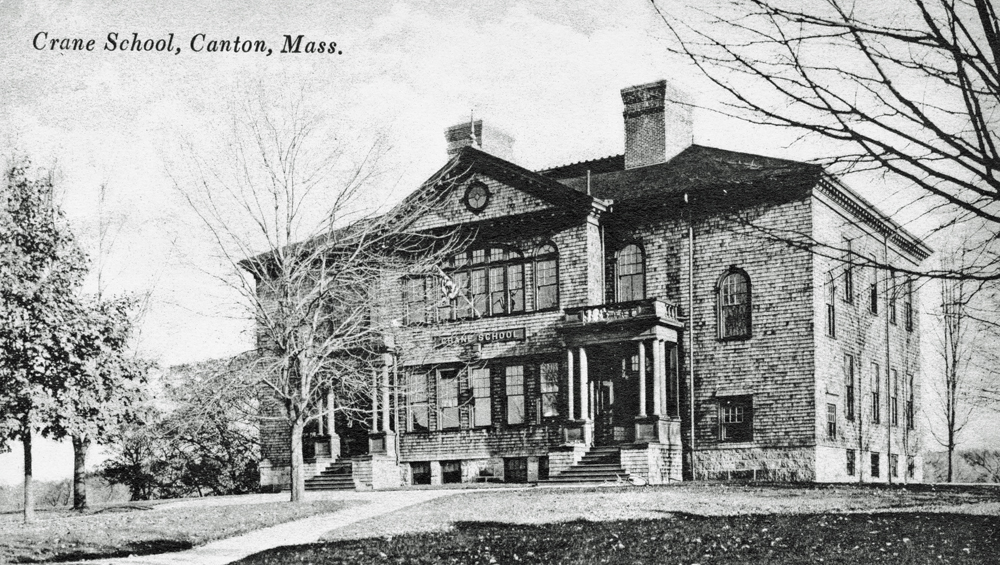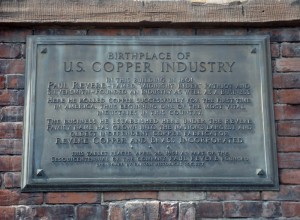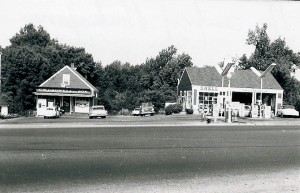True Tales: Gone and Almost Forgotten
By George T. Comeau
The Crane School in Canton Center, built in 1854, was demolished in 1955 to make way for a supermarket. (Courtesy of the author)
Since I began writing these stories over two years ago, what strikes me is how much of what I write about is simply gone and vanished from our town. Really, in over 300 years of recorded history and almost 12,000 years of inhabitation, we have lost so much of our heritage over time. Many people greet me with support for the words I write, and they quickly follow it up with phrases like “I did not know that” and “Where is that building now?”
The truth is that over time we are faced with the dilemma of deciding what to save for future generations and what to tear down and build over in the name of progress. Too often all we have is a foggy nostalgia for the ways things were and sometimes bemoan progress because we miss those places now long lost.
There are clues across the entire town that give faint nods to the past, and local historians see these clues as opportunities to tell stories about our most historic sites. Last Saturday, Wally Gibbs and I led a group of residents from Orchard Cove on a bus trip across the 19 square miles of Canton. So many times we would point out the window and announce, “Once on this site stood …”
Over the past 20 years or so, we have become somewhat better at acknowledging our lost heritage sites. For instance, as you drive through Canton Center the steps leading from the Walgreens parking lot onto Washington Street are engraved “Crane School” to mark the site of one of Canton’s most grand public schoolhouses. The same thing happens at the Hemenway School, steps across from the Post Office. And at the corner of Pleasant and Independence streets is a sign memorializing the home of Roger Sherman.
The fact that the Roger Sherman House has long been destroyed to make way for a modern subdivision is a familiar pattern in Canton. Sherman, arguably one of the most influential founders of this country, is the only person to sign all four great papers of the founding of the United States. Sherman signed his name onto the Continental Association, the Declaration of Independence, the Articles of Confederation, and the Constitution. And how do we recognize the fact that this man grew up in Canton? Well, a simple cast-iron sign at the edge of a driveway does quite nicely. Oh, we also named a street for the man.
We really do not know how historic this town really is, and our community fails in so many ways to herald and trumpet our achievements. Take, for instance, the fact that Paul Revere moved here at the tender age of 65, built an empire from a modest life savings, produced one of the first major industries in the new United States, and left generations of kin to build the town of Canton through the early 1900s — raising children here, supporting the birth of the railroad, living among us and loving this town. Our celebration of his time here is marked again with a street name, a mural in the post office, and we once named an elementary school after him — mothballing and selling it in the 1970s. No statue to the man exists or any dedication memorializing one of the greatest patriots in America.

The plaque that honors Paul Revere’s Copper Rolling Mill at the Plymouth Rubber site (Courtesy of the author)
In a community that is the site of one of the first Indian reservations in the new world, a place where hundreds would die and be buried, we merely assign a rusty sign on Route 138 to mark the boundary of the Ponkapoag Plantation. At a place where liberty was born, the site of the Doty Tavern at the foot of the Great Blue Hill, there is no longer a marker to tell the story. And on Bolivar Street, where once stood a shovel shop that literally created the westward expansion of America, neither a plaque nor marker exists to pay reverence to the men who spent an entire life toiling so our country could be connected by the railroad — from east to west.
The oldest public cemetery in the United States at Canton Corner decays; stones lay broken and shattered, markers dissolving into time. We lose our ancestry of our founders, our friends and neighbors, and the markers of thousands of soldiers, sailors, and airmen across time. The bronze markers that once helped memorialize their resting places long stolen and never replaced. We can do better.
And in several other places there are long-forgotten burial grounds of the Ponkapoag Indians. On York Street, Burr Lane, and Chapman Street, the remains of Canton’s first settlers are in unmarked, overgrown, and forgotten plots of land. At the Old English Cemetery, opened in 1700, pine trees sprout, reclaiming the plot of land that for 312 years has been our sacred duty to maintain and yet is slipping away from us with each passing season.
Dozens of mill sites, now luxury condos or subdivisions, are long lost historic places where American ingenuity led to countless innovations and inventions. The steam shovel, rolled copper, gunpowder, silk, telephone receivers, sonar systems, and even the birth of plastic wood — pretty much lost and not recognized.
There was a time when the great philanthropists stepped in and helped build the history of this town — a time when Augustus Hemenway used his personal fortune to build the Ponkapoag Schoolhouse. Hemenway would then help pay for the new high school. And because he valued literacy and the arts, he personally bought the land, hired an architect, and supervised the construction of the library. When he was done, he and his wife signed the deed over to the town of Canton.
When the time came to pay tribute to the soldiers who died in the Great Rebellion, the Civil War, private men like Elijah Morse stepped forward and donated the land and money to build our great landmark building. There was a time when history was valued and saved so that future generations could inherit the town in a better place than they found it — clear in the design that history mattered.
There is a page on Facebook entitled “You Know You Grew up in Canton if…” The site hosts plenty of wonderful old photographs and memories of a place that vaguely looks like Canton. There are over 1,800 “friends” on the page, and the reminiscing is a trip down memory lane. A recent post featuring the original Crowell’s Store elicited dozens of comments. My favorite was Mary Antonelli’s nostalgic comment, “I remember the old wooden floors and walking to the back where Pete or Ed would cut your meat and package it for you! I can picture the inside of the store now!”

Crowell’s Store in 1965 at the intersection of Washington Street and Route 138 (Courtesy of the Canton Historical Commission)
Personally, I want to live in a town that begins to take stock of our existing historic resources and protect and preserve them so that future generations can experience the affinity of belonging to a community that is truly part of American history. Envision our cemeteries preserved and secured. Imagine the Paul Revere rolling mill and Joseph Warren Revere’s barn an integral part of the reclaimed and redeveloped hazardous waste site now sitting vacant at Plymouth Rubber.
Know that what can flourish in Canton is a renewed commitment to our recreational sites, places that bring you face-forward into our history. A canoe launch on Reservoir Pond becomes a lesson in our colonial history. A garden sanctuary at the new senior center becomes a chance to discover the story behind Roger Sherman’s boyhood home. And whether it is a dog park, a historic new roof, a reclaimed mill building, or modern upgrades to a 100-year-old playground on Messinger Street, there is a way to pay for these items through the Community Preservation Act.
We can actually do something to improve the quality and presence of our heritage. On Tuesday, November 6, you will be asked to vote for the Community Preservation Act under Question 4. I have asked you to support this vote earlier this year, and now I redouble my efforts to ask for your vote. What will we do when we are successful with this vote? So many projects stand in the wings that begin to take shape. You, the voter, will decide on all the projects we undertake as we move forward. Whether it is elderly housing initiatives, improvements to our open space and recreation, or historic preservation of our places and materials, you will decide how we spend the money — and the matching funds of that exceeds a quarter for every dollar we put in trust. Imagine if your own investments did so well.
Most importantly, under the CPA Question 4, most senior citizens are totally exempt from having to contribute to this funding. Put simply, as you read this, if you are over 60 and claim less than $68,460 in personal income, you will not pay into the CPA. For all of the rest of us, 1 percent of our property tax after the first $100,000 of value will be set aside in trust for community preservation projects.
For people who are curious as to how the CPA works for Canton — as it does for 148 other communities like Stoughton, Sharon, Braintree, Quincy and Easton — check out the website at investincanton.weebly.com. Please vote to preserve Canton so that we face the next century of progress recognizing our historic and beautiful community passed to the next generation in full recognition of the people who made Canton a most historic community.
Short URL: https://www.thecantoncitizen.com/?p=16933










